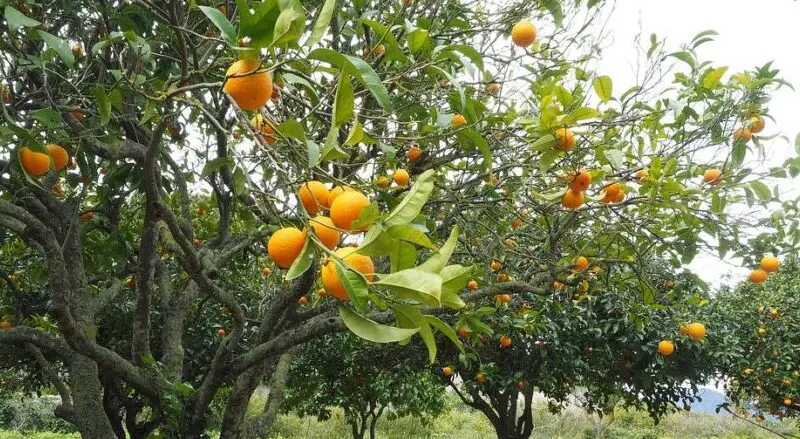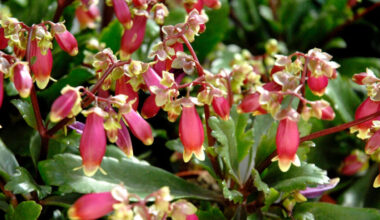Filled with vitamins, oranges are very popular. If you are lucky enough to have a garden and an orange tree, take advantage of it! This citrus fruit is a very beautiful decorative tree: its beautiful green foliage and its banal and fragrant flowers decorate a garden and give it an exotic touch.
It is often found around the Mediterranean and in warm regions. There are more than 15 varieties of orange trees.
Contents
Planting the orange tree
In our latitudes, we can grow the orange tree in the ground when the climate allows it, ie when it does not freeze in winter. Everywhere else, it is advisable to grow the orange tree in a pot to be able to put it under cover in winter.
- The trunk can withstand 16°F, its foliage becomes damaged at 26°F.
- Between 32 and 50°F, the orange tree is in a vegetative state.
Be careful, the orange tree does not appreciate high heat either. Above 95 °F, it goes back into vegetative rest. Last tip: avoid places exposed to strong winds, the branches – especially when they are loaded with fruit – would break.
When to plant the orange tree?
The orange tree is best planted in spring, either in the ground or in a container. At this time of the year, it has time to settle in well before winter. You can prepare the planting hole in advance: in autumn, in a soil enriched with manure or compost.
Where to plant the orange tree?
The orange tree grows in a consistent, well-drained, humus-rich soil. Grow it in a container in a mixture of soil (not calcareous) for half, coarse sand and compost.
Choose a warm, sunny and windless location.
Outdoor planting
The orange tree can be planted in the open ground only in regions spared from winter frost.
- Prefer a sunny place sheltered from the wind.
- A mixture of garden soil and potting soil is essential for planting.
- Make sure the soil is rich and well drained, fertilizing at planting will promote recovery and growth.
- Water well during the first year after planting
Planting an orange tree in a pot
Water regularly so that the mixture does not dry out completely between two waterings in summer, without ever leaving water in the cup. However, wait until the substrate has dried on 1 inch of the surface before watering again. Add ‘Special Citrus’ fertilizer every 15 days during the growing period. Stop adding fertilizer during the resting period.
In winter, remove the cup and water sparingly every 10 to 15 days to respect the resting period.
As soon as the temperature drops in autumn, install your orange tree in a veranda, a winter garden or a very bright room, if possible receiving morning or late afternoon sun. Keep the temperature cool but frost-free (ideally between 46 and 55°F).
Prune after harvesting to promote light penetration and good ventilation. To do this, cut off the secondary branches that cross in the center of the orange tree.
In spring, pinch off the ends of the stems above a pair of leaves.
Beginning in May, or even earlier in areas where frost is not late, gradually move your orange tree out into full sun.
Repotting the orange tree
Re-pot when the roots have grown into the root ball.
- Citrus trees try to colonize the pot before starting to bloom. In order not to delay fruiting, choose a container that is not too large compared to the initial pot: twice its maximum volume.
- Remember also that a large volume of soil offers a better protection of the roots against frost.
- Use a special citrus potting soil containing a good proportion of clay (5 to 10%), and pour 8 inches of draining mixture at the bottom of the pot (gravel or clay balls).
Repotting can be excluded for large plants grown in containers. In this case, surface the top layer of the substrate without damaging the rootlets, with a good humus (sheep manure is for example recommended by gardeners since the 17th century!)
Watering the orange tree
Watering the orange tree is important, especially in pots, as it tends to dry out much faster.
- The orange tree fears excess water.
- It is therefore necessary to water in case of heat, in a regular but limited way.
- Prefer to water in the evening to avoid that the water evaporates too quickly.
Pruning of the orange tree
When to prune the orange tree?
Pruning does not begin until the third year after planting. It is done at the end of winter, after the last frosts and before flowering.
How to prune an orange tree?
Select 3-4 shoots of equal vigor and pinch off the secondary shoots and suckers throughout the growing season in order to promote the development of the foliage. The increase in leaf area should form a sort of low sphere to protect the bark and wood from cold attack.
Don’t forget to remove the dying or troublesome branches, the old wood that is not very productive and the excess of suckers. This pruning should be light for a vigorous orange tree and more severe for a sickly one.
Hardiness and wintering
Not very hardy, the orange tree can only withstand 19°F for short periods of time (for the subjects in the ground).
In cold regions, grow it in a container and overwinter it in October in a cool (43 to 46°F) and bright place. Water very little during the wintering period.
Diseases and parasites
Aphids and mealy bugs often colonize the leaves and twigs of the orange tree, and can lead to the development of smoke on the leaves. To eliminate them, spray with a black soap solution (5 spoons of liquid black soap for 1 liter of water). If your orange tree is infested with red spiders, shower the foliage to remove them.
Harvesting oranges
When and how to harvest oranges?
Oranges are picked when they are ripe but it is important to know that the cold is responsible for the coloring of oranges. In the tropics, oranges keep their green skin despite their maturity.
- Picking is done by hand, use gloves or a pair of pliers with turned tips.
- Cut the stalk flush with the calyx without damaging the fruit.
- Be careful not to hurt or shock the fruit left on the tree.
How to preserve the harvested oranges?
Oranges can be stored for up to 5 months in cold storage.
The fruit is usually treated with a fungicide (thiabendazole or imazalil) and covered with wax or plastic film to avoid drying out. Tissue paper offers protection but above all a better presentation of the fruit.
If you squeeze an orange, consume the juice without delay to preserve the vitamin C.
To know about the orange tree
Very appreciated by the kings of France, orange trees have given rise to the construction of superb orangeries, mostly in the gardens of castles.
Their great luminosity and their relatively mild temperature in winter made them a perfect place to preserve these small trees.
They are more and more coveted nowadays and most garden centers offer them for sale.
Citrus trees are known for their beautiful green foliage and fragrant white flowers which make them a beautiful decorative tree.
The fruits add an exotic dimension to this aspect, you will be delighted!








